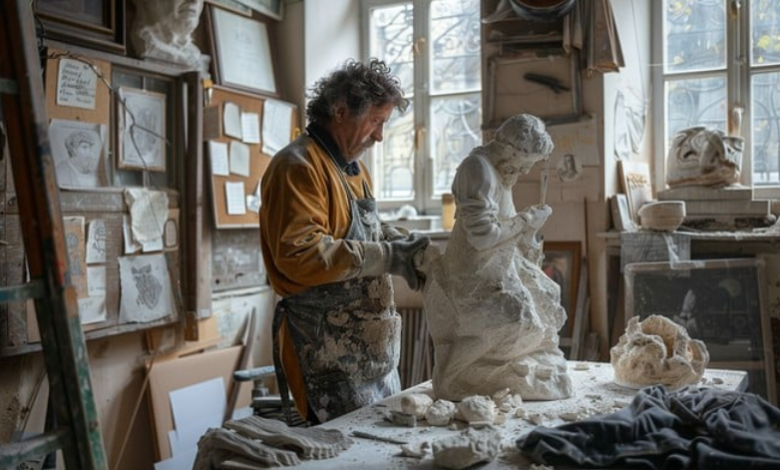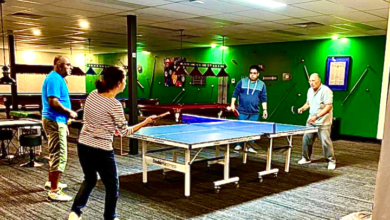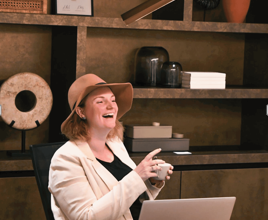Why Custom Sculptures and Bronze Sculptures Continue to Inspire in a Fast-Changing World

In an age defined by mass production and digital content, the lasting presence of a handcrafted custom sculpture carries a different kind of weight—one rooted in history, craftsmanship, and emotional resonance. Whether displayed in public parks, private estates, or museums, sculptures tell stories that words sometimes cannot. Among the many materials available for sculpture today,bronze sculpture stands as one of the most revered and timeless, bridging the gap between tradition and modern creativity.
Both custom sculpture and bronze sculpture hold an essential place in the world of fine art, architecture, and public memory. But beyond their aesthetic appeal, they serve as physical manifestations of cultural identity, personal milestones, and historical significance. Let’s take a closer look at why these two artistic expressions are thriving in today’s modern era.
The Power of Custom Sculpture in Personal and Public Spaces
A custom sculpture is, by its very definition, unique. It is created specifically to fulfill a client’s vision—whether that’s a memorial to a loved one, a centerpiece for a garden, or a symbolic form representing a personal or cultural belief. Unlike mass-produced art, custom sculptures offer individuality and permanence in a world that is increasingly fast-paced and disposable.
Key Features of Custom Sculpture:
- Personal Expression
A custom sculpture allows clients to express their stories or beliefs in a way that words or paintings often can’t. Whether abstract or figurative, these sculptures are deeply personal and meaningful. - Diverse Mediums and Styles
Custom sculptures can be made in a wide array of materials—wood, stone, stainless steel, clay, or bronze—and can take on any form, from minimalist shapes to highly detailed representations. - Site-Specific Integration
Whether placed in a garden, lobby, or public square, custom sculptures are often designed to harmonize with their surroundings, becoming part of the landscape rather than separate from it. - Functional and Decorative
While most custom sculptures are created for visual impact, they can also be functional, serving as benches, fountains, or interactive pieces.
From memorials and religious icons to company mascots and abstract installations, custom sculptures transform ideas into something physical and enduring.
See also: How a Landscaping Company Maximizes Your Garden’s Lifespan
Why Bronze Sculpture Has Stood the Test of Time
When we talk about sculptures that have lasted for centuries—think ancient Roman emperors, Renaissance masters, or traditional Buddhist icons—we’re often talking about bronze sculpture. Bronze has long been the material of choice for sculptors around the world due to its strength, beauty, and workability.
What Makes Bronze So Unique?
- Durability
Bronze is an alloy made primarily of copper, with a mix of tin and other metals. Its resistance to corrosion, particularly in outdoor settings, has made it a favorite for public monuments and statues. - Fine Detail and Realism
Bronze’s fluidity when molten allows for precise and intricate casting, capturing textures like hair, muscle, and clothing folds in lifelike detail. This makes it ideal for figurative work. - Aging with Grace
Over time, bronze naturally develops a patina—a green or brown layer that forms due to oxidation. Instead of degrading the piece, this patina often enhances its beauty and historic character. - Historical Prestige
From ancient civilizations to the modern art world, bronze sculpture has been used to immortalize heroes, gods, events, and abstract ideas. It lends a sense of gravitas and timelessness to any space it occupies.
The Intersection of Custom Sculpture and Bronze: A Creative Renaissance
When the personalization of a custom sculpture is combined with the material richness of bronze sculpture, the results can be breathtaking. This intersection allows artists to bring an individual’s or institution’s unique vision to life with a material that communicates strength, permanence, and artistic prestige.
Examples of Where They Shine Together:
- Memorial Statues: Life-sized bronze custom sculptures of notable individuals installed in parks, universities, or courtyards.
- Garden Art: Custom bronze animals, human forms, or abstract shapes that weather beautifully over time while enhancing natural surroundings.
- Corporate Installations: Bronze sculptures representing company values or brand stories, placed in lobbies or outdoor courtyards.
- Religious Symbols: Custom bronze sculptures of spiritual figures or sacred objects, designed to evoke reverence and reflection.
This synergy is especially relevant today, where the demand for meaningful, high-quality, and personalized art is stronger than ever.
The Process of Creating a Custom Bronze Sculpture
Creating a custom bronze sculpture is both an artistic and technical endeavor, typically involving several steps that blend old-world craftsmanship with modern technology.
- Concept and Design
It all begins with an idea. This might be a sketch, a story, or a reference image. The artist works closely with the client to translate this idea into a formal design. - Clay or Wax Model
A physical model is sculpted—usually in clay or wax—to finalize proportions, gestures, and details. - Mold Making
Once the model is approved, a mold is made. This is typically done using silicone and reinforced with plaster or fiberglass. - Casting
The mold is used to create a wax replica of the sculpture, which is then encased in a ceramic shell. This shell is heated, melting out the wax and making room for molten bronze to be poured in—a method known as the “lost wax” casting process. - Finishing and Patina
After cooling, the bronze sculpture is broken out of the mold and cleaned. Artists then apply surface treatments—grinding, sanding, and chemical patinas—to give the piece its final look. - Installation
The final step is safely transporting and securely installing the sculpture in its intended location.
Why These Sculptures Still Matter Today
As technology continues to evolve, so too does the role of sculpture in our lives. However, the need for tangible, meaningful, and lasting forms of expression remains deeply rooted in human culture.
A custom sculpture allows for personal and cultural expression in a way few other mediums can match. When created in bronze, it gains an added dimension of weight, tradition, and timelessness. These artworks aren’t just objects—they are emotional landmarks, historical markers, and spiritual symbols.
Final Thoughts
In a world that moves quickly and forgets even faster, both custom sculpture and bronze sculpture offer something rare: permanence. They speak to our desire to be seen, remembered, and understood—not just now, but by future generations. Whether you’re honoring a legacy, celebrating a milestone, or simply bringing beauty into a space, these sculptures serve as enduring testaments to the things that matter most.




